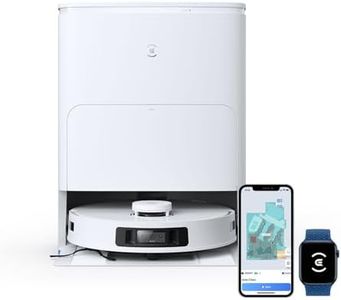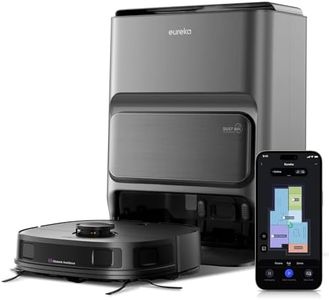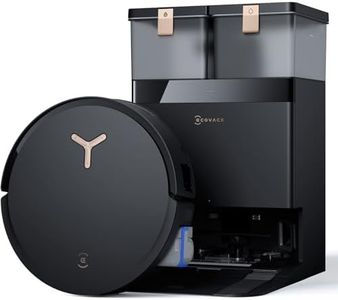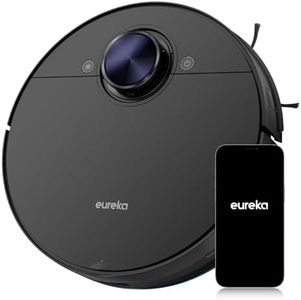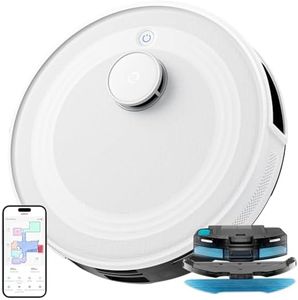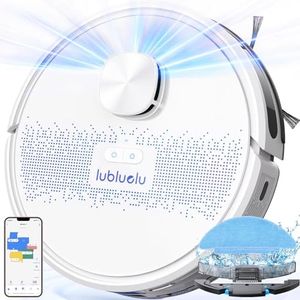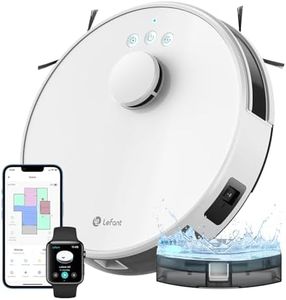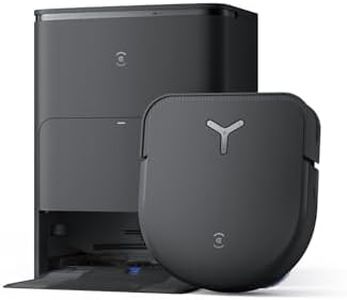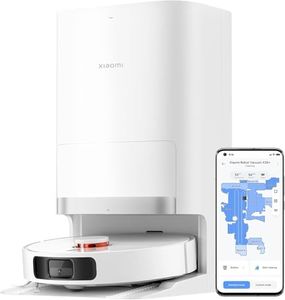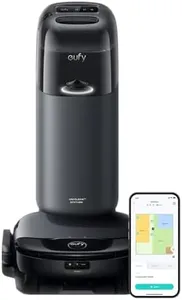We Use CookiesWe use cookies to enhance the security, performance,
functionality and for analytical and promotional activities. By continuing to browse this site you
are agreeing to our privacy policy
10 Best Robotic Vacuum With Mapping
From leading brands and best sellers available on the web.Buying Guide for the Best Robotic Vacuum With Mapping
Choosing a robotic vacuum with mapping is a great step toward making cleaning effortless. These devices can move around your home on their own, avoiding obstacles and cleaning floors while you relax or do other things. However, not all robotic vacuums are the same—different models offer varying features that affect convenience, cleaning performance, and compatibility with your home. By focusing on a few key specifications, you'll be able to select a model that truly fits your space and lifestyle.Mapping TechnologyMapping technology refers to how the robotic vacuum understands and navigates your home's layout. Some robots use camera-based systems, while others work with lasers or a combination of both (LiDAR). More advanced mapping allows the robot to clean rooms in efficient, straight lines and remember specific areas to clean or avoid. Simpler robots might only bump randomly around. To choose, consider if you have a complex layout or specific rooms you need cleaned methodically; more advanced mapping will be especially helpful there. Smaller or more open spaces can get by with basic mapping, but larger homes benefit from smarter navigation.
Suction PowerSuction power determines how well the vacuum picks up debris, dust, and pet hair from different surfaces. This is usually measured in Pascals (Pa) or described generally as low, medium, or high. Low suction works for mostly bare floors, while higher suction is better for families with pets or lots of carpet, where dirt can get trapped deeper. Think about your floors: if you have mostly tile or hardwood, moderate suction may be enough. Homes with thick carpets will want a machine with stronger suction.
Battery LifeBattery life affects how long the robotic vacuum can run on a single charge, which is important for how much it can clean in one go. Smaller apartments may need only 60–90 minutes of battery time, while larger homes could benefit from 120 minutes or more. Some robots can recharge and continue working automatically, which is helpful for large spaces. If complete, uninterrupted cleaning is key for you, pay attention to battery life and features like automatic resume.
Dustbin CapacityDustbin capacity is the size of the container that collects dirt, dust, and debris. Larger bins mean the vacuum can clean longer before you need to empty it. If your home tends to get very dusty, or you have pets, choosing a unit with a bigger dustbin will save you from frequent emptying. For small homes or less frequent cleaning needs, a smaller bin might be sufficient.
Obstacle Detection and AvoidanceObstacle detection refers to how well the robotic vacuum can sense and steer clear of objects like furniture, shoes, or pet bowls. Basic models might just bump and turn, while more advanced ones use sensors or cameras to detect even small or low-lying objects. If your home has lots of furniture, cables, or toys on the floor, advanced obstacle avoidance will save you the trouble of preparing your space before each cleaning session.
App and Smart Home IntegrationMany robotic vacuums come with apps that let you schedule cleanings, set virtual boundaries, or check cleaning progress from your phone. Some can also be controlled via voice assistants. If you like to automate or control devices remotely, look for models with comprehensive app features and compatibility with your existing smart home setup. If you prefer simplicity, basic button-based controls may suffice.
Noise LevelNoise level is about how much sound the vacuum makes while running, usually measured in decibels (dB). Quieter models are ideal if you want to clean while working from home, watching TV, or if you have pets that are easily startled. If the vacuum will mostly run while you're out, noise is less of a concern. Check for quiet operation features if you value a peaceful environment.

